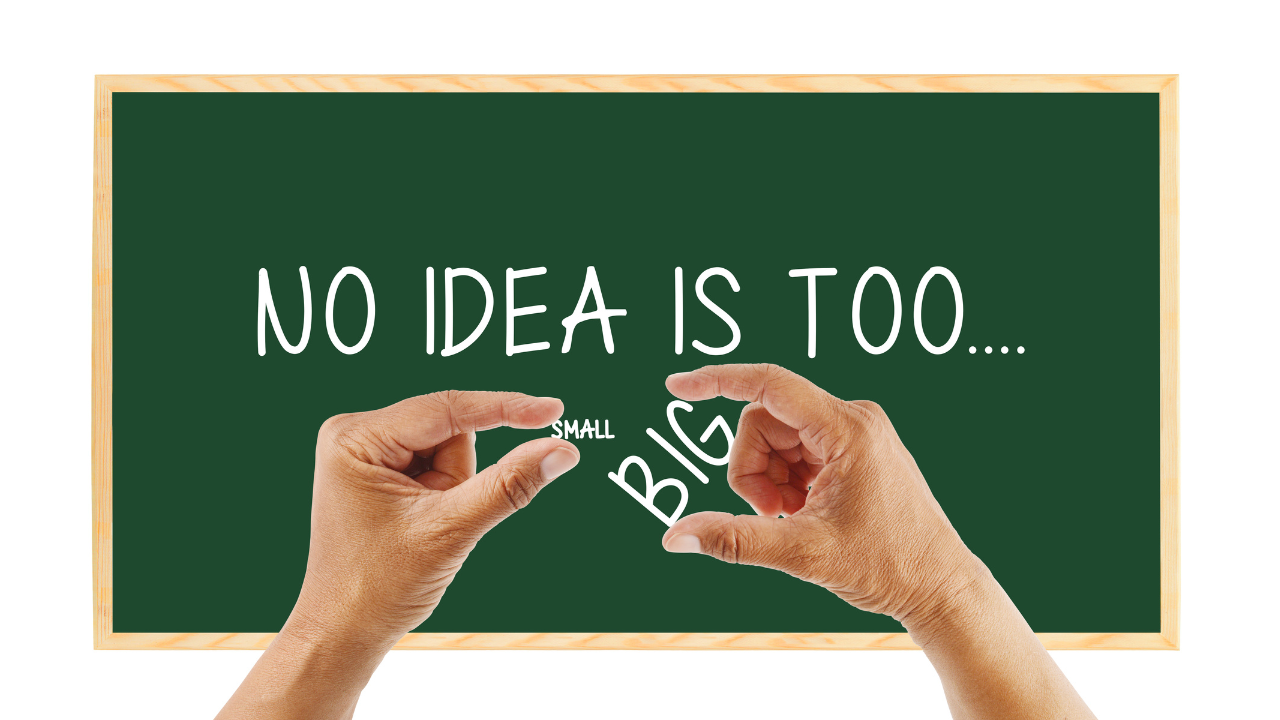6 Tips for Getting Executive Approval for CMMS Software
Reena Sommer, Ph.D
Posted 11/21/2023
The burgeoning Computerized Maintenance Management System (CMMS) market is a testament to its widespread appeal and demonstrated value to businesses across industry sectors. The ability of CMMS software to streamline and automate maintenance processes, leading to increased operational efficiency, is a drawing card. Specifically, the CMMS’s appeal lies in its ability to optimize maintenance operations, enhance asset reliability, and ultimately contribute to an organization’s overall productivity and profitability.
Yet, despite these attractive benefits, some executives remain wary of moving forward with a CMMS, and for good reasons. The software’s initial implementation cost and time investment can be substantial and potentially strain a company’s budget and resources. Transitioning to a CMMS is a big deal, and it often requires a cultural shift within the organization, requiring new workflows and habits for maintenance staff. This, too, is a concern because the change management process can be met with resistance from employees accustomed to existing systems.
On the technical side, executives may be concerned about integrating CMMS with existing software and hardware infrastructure or starting from scratch if neither exists. Data security and potential vulnerabilities pose a related sense of unease for many. Finally, reluctant executives may fear that CMMS might not deliver the promised return on investment, primarily if not correctly utilized or if the organization needs more expertise to maximize its benefits. These concerns need to be alleviated for executives to see that the benefits of implementing a CMMS will be worth the cost, time, and energy needed.
Gaining executive approval for a CMMS requires careful planning and persuasion. Here are six tips to help you secure executive buy-in for CMMS software:
1. Lean on the CMMS Provider
One of your best resources for getting executive approval for funding a CMMS is the CMMS provider. When you first engage a CMMS provider, you will be assigned an account executive whose job is to understand your business needs, determine if the solution is a fit, and help remove any obstacles through the purchase process. Your account executive will arrange software demos, trials, and, if warranted, a proof of concept (POC). He or she will provide you with case studies, customer references, and relevant testimonials. He or she should also be able to highlight the differences between their solution and others that you are considering. For your IT folks, your account executive can provide you with security documentation, details on service level agreements, and other important information. Don’t hesitate to ask for help building a short and long-term ROI case.
2. Define the Benefits (and How the CMMS Solves Pain)
Before getting into the general benefits of a CMMS, it is essential to identify specific pain points and challenges your maintenance department is facing. Getting your CFO and other executives to approve funding for software just because it has a lot of benefits is not likely to happen in our current economic environment and into the future. Clearly define the pain points and challenges your maintenance department faces and provide the financial impact they cause.
For example, over the past 12 months, we have had X number of assets break down and require X $ in overtime pay for emergency repairs and X $ spent in rush orders for replacement parts and components. This will take some time to document to make the case, but real-life problems with real numbers are tremendously helpful in getting executive approval. Once you have defined the challenges you expect a CMMS to solve, tie those challenges to CMMS benefits.
Now let’s explore some of the benefits organizations can expect from CMMS software:
Cost Savings:
Highlight how CMMS can lead to significant cost savings through better resource allocation, reduced downtime, and optimized inventory management.
A CMMS:
- Enables efficient scheduling and tracking of preventive maintenance, reducing unexpected breakdowns and costly repairs.
- Provides data-driven insights for better decision-making, optimizing maintenance schedules and resource allocation.
- Helps inventory management, ensuring that spare parts are ordered judiciously, avoiding overstocking or shortages.

Improved Productivity:
Emphasize how CMMS streamlines workflows, reduces manual paperwork, and automates routine tasks, allowing the team to focus on more value-added activities.
A CMMS:
- Reduces downtime and ensures equipment remains in optimal condition.
- Leads to increased operational efficiency.
- Enables better resource allocation and allows for predictive maintenance, preventing costly breakdowns and extending the lifespan of assets.
Regulatory Compliance:
Explain how CMMS helps maintain compliance with industry regulations and standards, reducing the risk of fines or legal issues.
A CMMS:
- Helps ensure that equipment and facilities are regularly inspected, serviced, and repaired according to industry and government regulations.
- Provides a comprehensive record-keeping system, facilitating easy access to historical maintenance data for audits and reporting.
Enhanced Asset Management:
Discuss how CMMS enables better tracking, maintenance scheduling, and asset lifecycle management, prolonging their lifespan and reducing replacement costs.
A CMMS:
- Offers a centralized platform to efficiently organize and track all aspects of an organization’s assets.
- Schedules routine maintenance tasks.
- Monitors equipment health.
- Comprehensively records maintenance history.
- Generates reports and analytics.
Data-Driven Decision Making:
Explain how CMMS provides valuable data and analytics for informed decision-making, helping to identify trends, prioritize tasks, and allocate resources more effectively.
A CMMS:
- Provides real-time insights and historical records and leads to improved equipment reliability, reduced downtime, and optimized resource allocation.
- Helps organizations track performance metrics, schedule maintenance tasks proactively, and make informed choices based on actionable data.
3. Demonstrate Return on Investment (ROI)
CMMS ROI measures the financial benefits of implementing its software in an organization. It quantifies the cost savings, increased productivity, and improved operational efficiency that result from using the system to manage maintenance activities, equipment, and resources. This calculation helps businesses assess whether the investment in a CMMS is justified through its tangible benefits.
When laying out how a CMMS will impact your company’s ROI, provide a clear and well-researched ROI analysis. Show how the initial investment in CMMS software will pay off in terms of cost savings, increased productivity, and reduced downtime over time. Include tangible (e.g., reduced maintenance costs, decreased downtime) and intangible benefits (e.g., improved customer satisfaction, enhanced safety) in your presentation.
It’s essential to tie the ROI to specific and tangible pain points the maintenance department faces. The ROI case needs to spell out the financial impact in the short term and long term. High-level, generalized ROI examples may be interesting. Still, they do not create a sense of urgency and won’t get the CMMS project prioritized over other competing projects that need funding and demonstrate cost savings or profit that can be realized within six months to a year. Focus on the more immediate return on investment as opposed to the long-term.
4. Highlight Success Stories and Case Studies
Share examples of other companies in your industry or similar operational settings that have successfully implemented CMMS and achieved tangible benefits. Real-world examples can serve as powerful proof points rather than hypothetical extrapolations. These reviews can offer insights into the system’s usability, functionality, and impact on maintenance operations. CMMS case studies help potential users make informed decisions by highlighting strengths, weaknesses, and specific features or capabilities that stand out. Finally, reviews and case studies can provide context on the level of support and customer service offered by the CMMS provider, contributing to a more comprehensive understanding of the system’s overall value. Make sure case studies come from businesses similar to your own. Use case studies of companies in similar industries, similar in size, and who are competitors.

5. Address Concerns and Objections
Anticipate potential objections or concerns from executives that may relate to implementation costs, training requirements, or resistance from the maintenance team. Be prepared with well-researched responses and a clear plan to mitigate these concerns.
The following are some suggestions for addressing the concerns raised:
- Be clear on your organization’s needs and priorities.
- Comprehensively understand the available options within the CMMS marketplace.
- Engage with trusted industry peers and seek reviews and testimonials.
- Explore case studies to gather valuable insights.
- Request demos or trials from potential vendors to evaluate the system’s user-friendliness and compatibility with your existing operations.
- Ensure that the chosen vendor provides robust customer support and training to guarantee a smooth onboarding process and ongoing success with the system.
- Consider the option of a phased implementation approach to minimize upfront costs and allow for a gradual transition.
6. Provide a Comprehensive Implementation Plan
A comprehensive plan for CMMS implementation can effectively allay concerns by providing a structured and transparent approach to integrating this critical software into an organization’s operations. A detailed plan for the implementation process must include timelines, milestones, and responsible parties. Additionally, any potential risks and how they will be mitigated should be noted.
The following should be included in a proposed implementation plan:
- Provide the results of a thorough needs assessment.
- Demonstrate an understanding of your organization’s existing maintenance processes.
- Detail how the selected CMMS will be tailored to meet your organization’s requirements.
- Present training strategies that will address concerns about workforce adoption and ensure that employees are adequately prepared for the transition.
- Include a robust change management strategy addressing how stakeholders’ resistance or apprehension will be mitigated.
- Outline a detailed timeline, milestones, and performance metrics to assess the process’s progress and eventual success once the CMMS is fully implemented.
- Explain how continuous monitoring and feedback loops are integrated to address emerging concerns, fostering collaboration and accountability promptly.
A well-structured CMMS implementation plan demonstrates a commitment to a seamless transition and should assuage resistance by building confidence in the system’s long-term benefits.

Conclusion – Getting Executive Approval for CMMS Software
As a final comment, remember to present information clearly and concisely and ensure that it is tailored to the interests and concerns of your specific executive audience. Using visual aids like charts or graphs helps illustrate your points. Additionally, be prepared to provide ongoing updates and progress reports once the CMMS software is implemented to demonstrate its continued value.
Change can be difficult, especially with a hefty price tag. There’s also a common belief: why fix what isn’t broken? For these reasons, executives’ resistance about moving forward with a CMMS must be taken seriously. To do so, addressing each of their concerns with reliable and well-researched information is essential. To convince executives that implementing a (CMMS) is a worthwhile investment, it’s crucial to emphasize its substantial benefits to the organization and offer a well-thought-out and realistic implementation plan.
Start by highlighting how a CMMS optimizes maintenance operations, streamlining work orders, scheduling, and asset tracking. Demonstrate how this translates into increased equipment uptime, reducing downtime costs significantly. Additionally, it informs executives that a CMMS enhances data-driven decision-making by providing real-time analytics and performance metrics, enabling the organization to make informed choices about resource allocation and select the right maintenance management strategy. Make it a point to stress the potential for cost savings through efficient inventory management, reduced emergency repairs, and improved regulatory compliance. Executives need to know that the long-term benefits of prolonging asset lifespan and ensuring regulatory compliance will ultimately lead to a more profitable and competitive enterprise. They will appreciate how this affects their bottom line.
Finally, when addressing concerns about the potential that users may also be reluctant to adopt a CMMS, detail the plans for engaging them throughout the entire process, beginning with preliminary discussions, through the onboarding process, and then continuing by gathering feedback from them once the CMMS implementation is underway and moving forward. By showing that a CMMS fosters a culture of accountability and transparency, empowering teams with the tools they need to excel in their roles and making their maintenance tasks more manageable, moving forward with the software seems less ominous. Ultimately, a CMMS investment boosts operational efficiency and sets the foundation for an organization’s sustained growth and success.

Reena Sommer
Reena Sommer has written extensively about CMMS and maintenance management best practices since 2018. Reena has been a contributor for Hippo CMMS, Click Maint among others. She has her Ph.D. in Psychology from the University of Manitoba. Reena hails from Winnipeg, Canada and currently resides in Chicago, Illinois, USA.
Related Articles

Too Small for a CMMS? Think Again

The Role of Information Technology in Plant Reliability

The Future of CMMS





